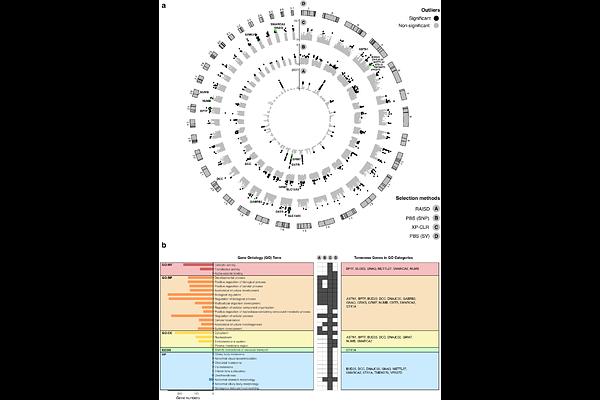Coexisting with humans: genomic and behavioural consequences in a small and isolated bear population

Coexisting with humans: genomic and behavioural consequences in a small and isolated bear population
Fabbri, G.; Biello, R.; Gabrielli, M.; Torres Villaca, S.; Sammarco, B.; Fuselli, S.; Santos, P.; Ancona, L.; Peretto, L.; Padovani, G.; Sollitto, M.; Iannucci, A.; Paule, L.; Balestra, D.; Gerdol, M.; Ciofi, C.; Ciucci, P.; Mahan, C. G.; Trucchi, E.; Benazzo, A.; Bertorelle, G.
AbstractClimate and land use change have increased human-wildlife interactions, potentially reducing wild species density and prompting behavioural adaptations to urbanised environments. It is still debated if behavioural responses are mainly the result of phenotypic plasticity or if they were driven by anthropic selective pressures, especially in small populations. Our study focused on the Apennine brown bear population (Ursus arctos marsicanus), which has coexisted with humans in Central Italy for millennia. We characterised genomic diversity and identified adaptation signals distinctive to this population by comparing whole genome resequencing data across the Holarctic species range. We show that Apennine brown bears possess a unique genomic diversity pattern including selective signatures at genes associated with reduced aggressiveness, possibly involving alternative splicing mechanism. Our findings suggest that even in small and long-isolated populations, selection may shape behavioural traits. We hypothesise that human-induced selection has influenced these changes, reducing conflicts and contributing to the long-term persistence of the Apennine bear and its coexistence with humans.